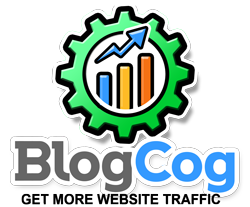
Hreflang Hell: A Practical Guide to Actually Fixing It (Without Losing Your Mind)
Share
In the lively swirl of online retail, where every click counts and every keyword matters, there's a sneaky little gremlin lurking in the shadows: the dreaded hreflang tag. It's like the GPS of the internet, guiding search engines to the right language or regional version of your content. But when it goes haywire, it can send your SEO strategy into a tailspin. So, how do you tame this unruly beast? Grab your digital toolbox, and let's dive into the world of hreflang troubleshooting!
First things first: what exactly is a hreflang tag? Think of it as a polite note to search engines saying, 'Hey, this page is meant for French speakers in Canada, not France.' It's an HTML attribute that helps search engines serve the correct regional or language version of your content to users. But when implemented incorrectly, it can lead to duplicate content issues, poor user experience, and a drop in rankings. Yikes!
Now, let's talk about the most common culprits behind hreflang errors:
- Missing or Incorrect hreflang Tags: If you forget to add a hreflang tag or get the language or region code wrong, search engines might serve the wrong version of your page to users.
- Self-referencing hreflang Tags: Every page should reference itself with a hreflang tag. Missing this can confuse search engines.
- Incorrect or Missing x-default Tags: The x-default tag tells search engines which page to serve when no other language or region matches. Without it, users might see a 404 page.
- Inconsistent Canonical Tags: Your canonical tags should align with your hreflang tags. Mismatches can confuse search engines about which page to index.
- Broken or Missing Links: If your hreflang tags point to pages that don't exist or are broken, search engines will get a 404 error, which isn't ideal.
So, how do you fix these issues? Here's a step-by-step guide:
- Audit Your Hreflang Tags: Use tools like Google's Search Console or Screaming Frog to identify missing or incorrect hreflang tags.
- Validate Your Tags: Ensure that each hreflang tag points to the correct URL and uses the correct language and region codes.
- Implement Self-referencing Tags: Every page should have a hreflang tag that points to itself.
- Use the x-default Tag: Implement the x-default tag to guide search engines when no other language or region matches.
- Align Canonical Tags: Make sure your canonical tags match your hreflang tags to avoid confusion.
- Check for Broken Links: Regularly test your hreflang links to ensure they don't lead to 404 pages.
But here's the kicker: even with all these fixes, implementing hreflang tags can still be a headache. That's where BlogCog comes in. With our AI-driven blog subscription service, we can help you create SEO-optimized content that caters to different languages and regions, ensuring your hreflang tags are always on point. Plus, our Google & Bing Indexing service ensures your content gets indexed quickly, boosting your SEO performance.
In conclusion, while hreflang tags can be a bit of a maze, with the right tools and strategies, you can navigate through them successfully. And remember, when in doubt, BlogCog's got your back!
Related Posts:
- How to Use Unicode Homoglyphs for Global SEO (Without Penalties): A Clever Guide by BlogCog
- Why Google Favors Certain Languages (Even When It Shouldn't): The Hidden SEO Bias Exposed
- How Dark Patterns Affect SEO (And When They’re Worth the Risk): What You Need to Know for Your BlogCog Strategy
- The Dark Side of Internal Linking: When Too Much Hurts SEO
- The SEO Challenges of Right-to-Left (RTL) Languages in 2025: Navigating the Digital Maze with Humor and Strategy
